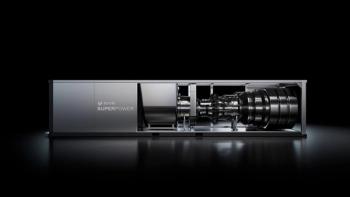
Siemens Energy Talks Decarbonization, Hydrogen, and the Future of Gas Turbines
A roundtable held by Siemens Energy discussed the role of gas turbines in the ongoing energy transition.
Siemens Energy hosted a roundtable in advance of its recent North America Energy Week event. Tim Holt, member of the executive board, began by saying that half the company’s portfolio is decarbonized and that is not good enough. To remedy this, the company is spending more than a billion Euros annually on R&D. One of the major investments is in arriving at zero-emissions power generation via the interim step of low-emissions power generation. The company has set a target to have its own operations carbon neutral by 2030.
Holt believes that proposed ideas to create hydrogen from renewable energy via electrolysis using excess power may not be the most efficient way forward. He characterized it as turning an electron into a molecule and back to an electron.
He pointed out that the lifespan of a gas turbine plant is around 25 years. That ties in with most projected targets to achieve carbon neutrality or for the complete elimination of fossil fuels. He suggested that investment in such facilities made sense. However, customers need reassurances about longevity.
“Many customers want to know that the turbines they are evaluating can eventually run on 100% hydrogen,” said Holt. “They want to be sure they do not end up with a stranded asset.”
He added that the discussion has shifted markedly from a year ago. Suddenly, there is momentum behind hydrogen and decarbonization in the U.S. However, there is a need for balance. As it is impossible to achieve net zero overnight, a transition is needed. Holt said natural gas will be the transition fuel. Even today, 40% of global power is generated by coal. That represents a big opportunity.
Take the case of Germany. With governmental policy making it a challenge to build or operate gas turbine plants, the unforeseen circumstance was that the country fell back on burning lignite. CO2 emissions are now higher than they were 10 years ago.
“You have to ensure you achieve the right balance that offers a sensible transition,” said Holt. “Storage is not developing fast enough. Gas is the best choice.”
North American Perspective
Richard Voorberg, president of Siemens Energy North America, acknowledged that 51 utilities have set the goal of decarbonizing by 2050. But when it comes to shifting from burning natural gas to hydrogen, he believes the gas turbine is the easy part. By 2025, all the company’s turbines will be hydrogen capable. By 2030, all will be able to run on 100% hydrogen. Currently, the company commits to 50% hydrogen in its largest model.
“The challenge is how to produce, store, distribute, and utilize hydrogen at scale,” said Voorberg.
How do you sell in a market where everyone wants hydrogen power but a) the turbines are not quite there and b) hydrogen is not available in quantity and at a low cost?
Statistically, emissions currently from power generation in the US are a third of what they were in 2005. No other sector can boast such progress. Yet Public Utility Commissions, grid operators and universities don’t want to even consider gas as an option.
“At the end of the day, they need power; we have to explain that you can’t run a grid only on renewables,” he said. “We need some rolling mass there and natural gas generation provides that.”
Newsletter
Power your knowledge with the latest in turbine technology, engineering advances, and energy solutions—subscribe to Turbomachinery International today.




